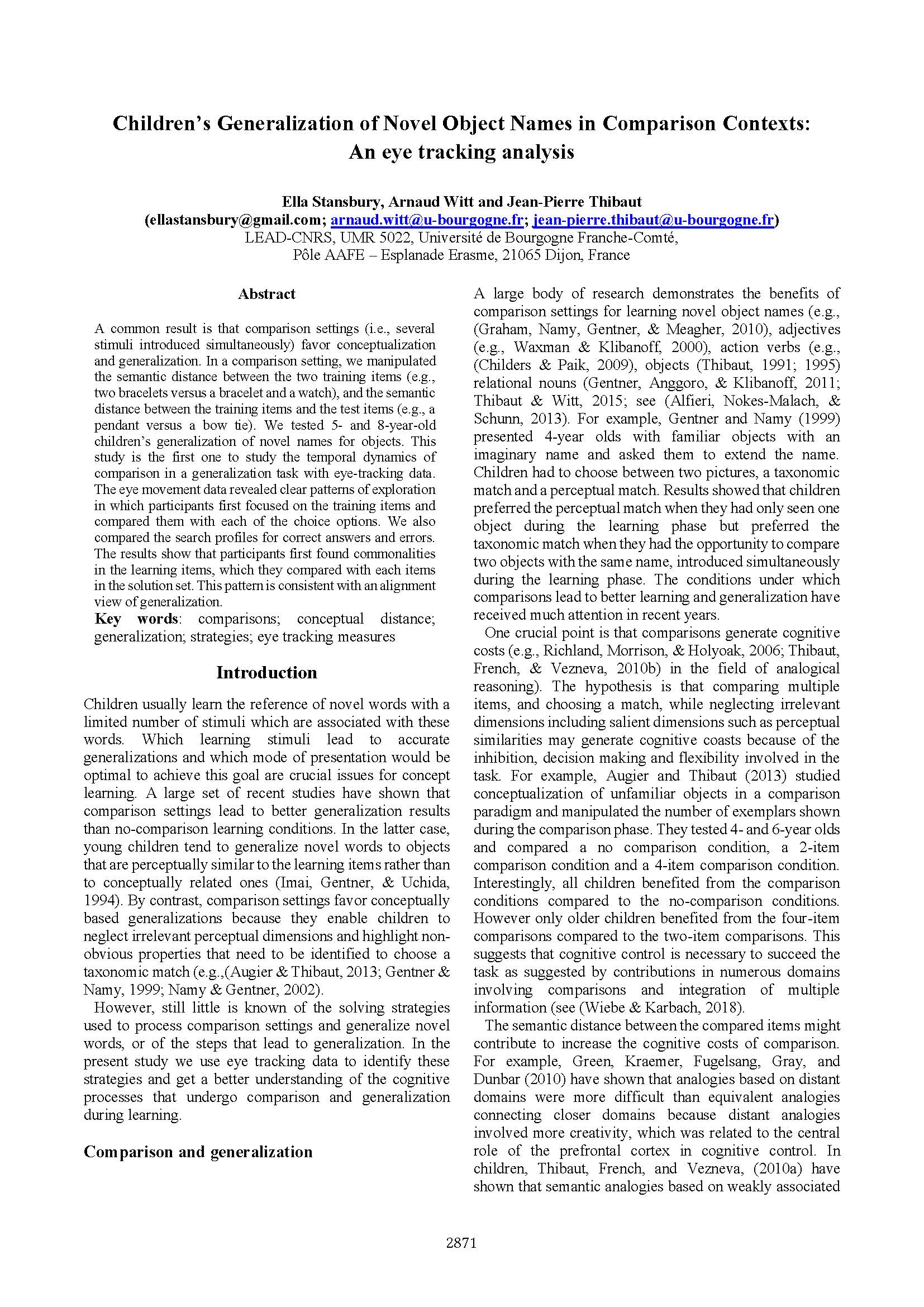A common result is that comparison settings (i.e., several stimuli introduced simultaneously) favor conceptualization and generalization. In a comparison setting, we manipulated the semantic distance between the two training items (e.g., two bracelets versus a bracelet and a watch), and the semantic distance between the training items and the test items (e.g., a pendant versus a bow tie). We tested 5- and 8-year-old children’s generalization of novel names for objects. This study is the first one to study the temporal dynamics of comparison in a generalization task with eye-tracking data. The eye movement data revealed clear patterns of exploration in which participants first focused on the training items and compared them with each of the choice options. We also compared the search profiles for correct answers and errors. The results show that participants first found commonalities in the learning items, which they compared with each items in the solution set. This pattern is consistent with an alignment view of generalization.
Children’s generalization of novel object names in comparison contexts: An eye tracking analysis
